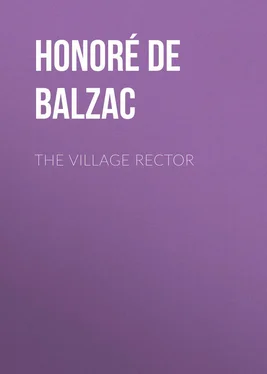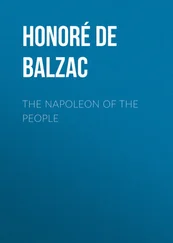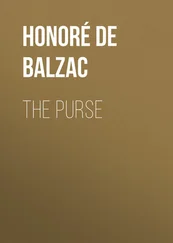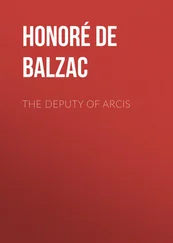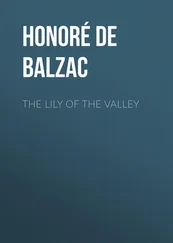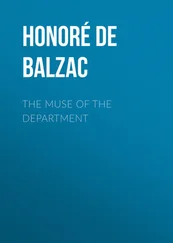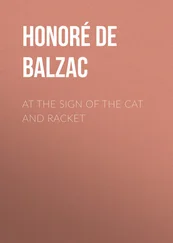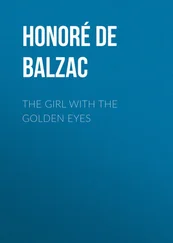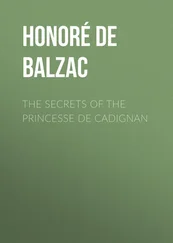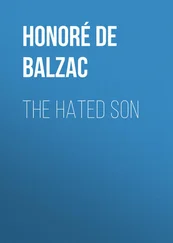Honoré Balzac - The Village Rector
Здесь есть возможность читать онлайн «Honoré Balzac - The Village Rector» — ознакомительный отрывок электронной книги совершенно бесплатно, а после прочтения отрывка купить полную версию. В некоторых случаях можно слушать аудио, скачать через торрент в формате fb2 и присутствует краткое содержание. Жанр: literature_19, foreign_antique, foreign_prose, на английском языке. Описание произведения, (предисловие) а так же отзывы посетителей доступны на портале библиотеки ЛибКат.
- Название:The Village Rector
- Автор:
- Жанр:
- Год:неизвестен
- ISBN:нет данных
- Рейтинг книги:4 / 5. Голосов: 1
-
Избранное:Добавить в избранное
- Отзывы:
-
Ваша оценка:
- 80
- 1
- 2
- 3
- 4
- 5
The Village Rector: краткое содержание, описание и аннотация
Предлагаем к чтению аннотацию, описание, краткое содержание или предисловие (зависит от того, что написал сам автор книги «The Village Rector»). Если вы не нашли необходимую информацию о книге — напишите в комментариях, мы постараемся отыскать её.
The Village Rector — читать онлайн ознакомительный отрывок
Ниже представлен текст книги, разбитый по страницам. Система сохранения места последней прочитанной страницы, позволяет с удобством читать онлайн бесплатно книгу «The Village Rector», без необходимости каждый раз заново искать на чём Вы остановились. Поставьте закладку, и сможете в любой момент перейти на страницу, на которой закончили чтение.
Интервал:
Закладка:
Honoré de Balzac
The Village Rector
DEDICATION
To Helene.
The tiniest boat is not launched upon the sea without the protection of some living emblem or revered name, placed upon it by the mariners. In accordance with this time-honored custom, Madame, I pray you to be the protectress of this book now launched upon our literary ocean; and may the Imperial name which the Church has canonized and your devotion has doubly sanctified for me guard it from perils.
De Balzac.I. THE SAUVIATS
In the lower town of Limoges, at the corner of the rue de la Vieille-Poste and the rue de la Cite might have been seen, a generation ago, one of those shops which were scarcely changed from the period of the middle-ages. Large tiles seamed with a thousand cracks lay on the soil itself, which was damp in places, and would have tripped up those who failed to observe the hollows and ridges of this singular flooring. The dusty walls exhibited a curious mosaic of wood and brick, stones and iron, welded together with a solidity due to time, possibly to chance. For more than a hundred years the ceiling, formed of colossal beams, bent beneath the weight of the upper stories, though it had never given way under them. Built en colombage , that is to say, with a wooden frontage, the whole facade was covered with slates, so put on as to form geometrical figures, – thus preserving a naive image of the burgher habitations of the olden time.
None of the windows, cased in wood and formerly adorned with carvings, now destroyed by the action of the weather, had continued plumb; some bobbed forward, others tipped backward, while a few seemed disposed to fall apart; all had a compost of earth, brought from heaven knows where, in the nooks and crannies hollowed by the rain, in which the spring-tide brought forth fragile flowers, timid creeping plants, and sparse herbage. Moss carpeted the roof and draped its supports. The corner pillar, with its composite masonry of stone blocks mingled with brick and pebbles, was alarming to the eye by reason of its curvature; it seemed on the point of giving way under the weight of the house, the gable of which overhung it by at least half a foot. The municipal authorities and the commissioner of highways did, eventually, pull the old building down, after buying it, to enlarge the square.
The pillar we have mentioned, placed at the angle of two streets, was a treasure to the seekers for Limousin antiquities, on account of its lovely sculptured niche in which was a Virgin, mutilated during the Revolution. All visitors with archaeological proclivities found traces of the stone sockets used to hold the candelabra in which public piety lighted tapers or placed its ex-votos and flowers.
At the farther end of the shop, a worm-eaten wooden staircase led to the two upper floors which were in turn surmounted by an attic. The house, backing against two adjoining houses, had no depth and derived all its light from the front and side windows. Each floor had two small chambers only, lighted by single windows, one looking out on the rue de la Cite, the other on the rue de la Vieille-Poste.
In the middle-ages no artisan was better lodged. The house had evidently belonged in those times to makers of halberds and battle-axes, armorers in short, artificers whose work was not injured by exposure to the open air; for it was impossible to see clearly within, unless the iron shutters were raised from each side of the building; where were also two doors, one on either side of the corner pillar, as may be seen in many shops at the corners of streets. From the sill of each door – of fine stone worn by the tread of centuries – a low wall about three feet high began; in this wall was a groove or slot, repeated above in the beam by which the wall of each facade was supported. From time immemorial the heavy shutters had been rolled along these grooves, held there by enormous iron bars, while the doors were closed and secured in the same manner; so that these merchants and artificers could bar themselves into their houses as into a fortress.
Examining the interior, which, during the first twenty years of this century, was encumbered with old iron and brass, tires of wheels, springs, bells, anything in short which the destruction of buildings afforded of old metals, persons interested in the relics of the old town noticed signs of the flue of a forge, shown by a long trail of soot, – a minor detail which confirmed the conjecture of archaeologists as to the original use to which the building was put. On the first floor (above the ground-floor) was one room and the kitchen; on the floor above that were two bedrooms. The garret was used to put away articles more choice and delicate than those that lay pell-mell about the shop.
This house, hired in the first instance, was subsequently bought by a man named Sauviat, a hawker or peddler who, from 1786 to 1793, travelled the country over a radius of a hundred and fifty miles around Auvergne, exchanging crockery of a common kind, plates, dishes, glasses, – in short, the necessary articles of the poorest households, – for old iron, brass, and lead, or any metal under any shape it might lurk in. The Auvergnat would give, for instance, a brown earthenware saucepan worth two sous for a pound of lead, two pounds of iron, a broken spade or hoe or a cracked kettle; and being invariably the judge of his own cause, he did the weighing.
At the close of his third year Sauviat added the hawking of tin and copper ware to that of his pottery. In 1793 he was able to buy a chateau sold as part of the National domain, which he at once pulled to pieces. The profits were such that he repeated the process at several points of the sphere in which he operated; later, these first successful essays gave him the idea of proposing something of a like nature on a larger scale to one of his compatriots who lived in Paris. Thus it happened that the “Bande Noire,” so celebrated for its devastations, had its birth in the brain of old Sauviat, the peddler, whom all Limoges afterward saw and knew for twenty-seven years in the rickety old shop among his cracked bells and rusty bars, chains and scales, his twisted leaden gutters, and metal rubbish of all kinds. We must do him the justice to say that he knew nothing of the celebrity or the extent of the association he originated; he profited by his own idea only in proportion to the capital he entrusted to the since famous firm of Bresac.
Tired of frequenting fairs and roaming the country, the Auvergnat settled at Limoges, where he married, in 1797, the daughter of a coppersmith, a widower, named Champagnac. When his father-in-law died he bought the house in which he had been carrying on his trade of old-iron dealer, after ceasing to roam the country as a peddler. Sauviat was fifty years of age when he married old Champagnac’s daughter, who was herself not less than thirty. Neither handsome nor pretty, she was nevertheless born in Auvergne, and the patois seemed to be the mutual attraction; also she had the sturdy frame which enables women to bear hard work. In the first three years of their married life Sauviat continued to do some peddling, and his wife accompanied him, carrying iron or lead on her back, and leading the miserable horse and cart full of crockery with which her husband plied a disguised usury. Dark-skinned, high-colored, enjoying robust health, and showing when she laughed a brilliant set of teeth, white, long, and broad as almonds, Madame Sauviat had the hips and bosom of a woman made by Nature expressly for maternity.
If this strong girl were not earlier married, the fault must be attributed to the Harpagon “no dowry” her father practised, though he never read Moliere. Sauviat was not deterred by the lack of dowry; besides, a man of fifty can’t make difficulties, not to speak of the fact that such a wife would save him the cost of a servant. He added nothing to the furniture of his bedroom where, from the day of his wedding to the day he left the house, twenty years later, there was never anything but a single four-post bed, with valance and curtains of green serge, a chest, a bureau, four chairs, a table, and a looking-glass, all collected from different localities. The chest contained in its upper section pewter plates, dishes, etc., each article dissimilar from the rest. The kitchen can be imagined from the bedroom.
Читать дальшеИнтервал:
Закладка:
Похожие книги на «The Village Rector»
Представляем Вашему вниманию похожие книги на «The Village Rector» списком для выбора. Мы отобрали схожую по названию и смыслу литературу в надежде предоставить читателям больше вариантов отыскать новые, интересные, ещё непрочитанные произведения.
Обсуждение, отзывы о книге «The Village Rector» и просто собственные мнения читателей. Оставьте ваши комментарии, напишите, что Вы думаете о произведении, его смысле или главных героях. Укажите что конкретно понравилось, а что нет, и почему Вы так считаете.
